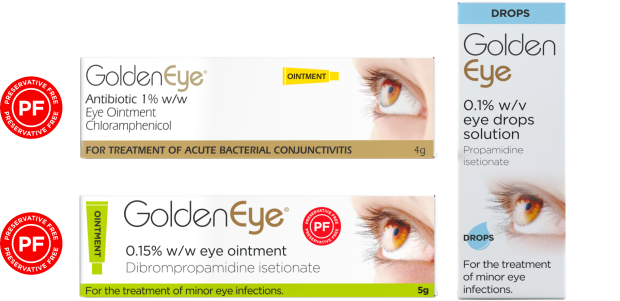
Many parents will have gone to get their child up first thing in the morning to find their child is especially bleary eyed, with a crusty eye lid and saying their eye is sore. Many of us will have woken up with these symptoms as adults, remembering that they eye felt gritty and inflamed. This is likely to be conjunctivitis and it can come on very quickly. It can start in one eye and spread quickly to both eyes.
Sometimes known as pink-eye, the literal meaning of conjunctivitis is inflammation of the conjunctiva, which is the membrane (or thin skin) on the inside of the eyelid. It happens when the blood vessels of the sclera (the white of the eye) become dilated, giving us that red-eyed appearance. The conjunctiva also produces too much of the mucus and tears it’s meant to secrete, resulting in discharge. This discharge can dry on the eyelids over night leading to a crust and sometimes difficulty in getting the eye open.
Conjunctivitis is often an infection caused by a virus or bacteria, though it may be caused by an allergy. As with any infection, it’s a sign that the immune system is not working as it should be. Your child may already have a cold or flu and be “run down”. Conjunctivitis can be a sign of COVID so it’s important to get your child tested. Conjunctivitis is very common in children as well as adults. It is very contagious, and breakouts can sweep thorough nurseries, preschools, infant schools, and playgrounds.
What are the signs and symptoms of pink eye?
- The white(s) of the eye(s) look red or pink
- The eyelids are inflamed or sore
- The eyes feel gritty and/or itchy
- There’s a white or yellow sticky discharge coming from one of both eyes
- There’s a discharge on the eye lashes
- The eye lids are stuck together in the morning
It’s important to note the appearance of the discharge from the eye(s). If the conjunctivitis is caused by bacteria, the discharge will be sticky. If the conjunctivitis is viral in origin or due to an allergy, the discharge will be watery. Itching is more likely to be a symptom if it’s caused by an allergy, like hay fever.
How to treat conjunctivitis
It’s important to treat conjunctivitis quickly. Wipe away any crust from each eye using a separate, clean cotton wool pad dipped in cooled boiled water. If your youngster wears, contact lenses remove them until the pink eye resolves.
Mild infections in young children (as well as adults) can be treated using Golden Eye® Eye Drops or non-antibiotic Golden Eye® Eye Ointment. They contain a type of antiseptic called “dimidines” and help to stop bacteria growing and multiplying so your immune system can get to work.
If using either product alone, apply it four times a day. However, if you choose to use the ointment and eye drops in combination, you can use the drops four times a day and the ointment once a day at bedtime. Golden Eye® Antibiotic Eye Ointment containing chloramphenicol may be used in cases of acute bacterial conjunctivitis and is suitable for children from the age of two years. If the pink eye does not resolve in 48 hours consult the doctor.
Six steps to stop conjunctivitis in its tracks:
- DO wash your hands regularly with warm soapy water
- DO wash pillowcases and face cloths in hot water and detergent
- DON’T share towels and face cloths
- DON’T rub your eyes
- DON’T wear contact lenses until your eyes are back to good health
- DO ask your pharmacist for self-care solutions to treat the symptoms with an over-the-counter pharmacy product. Golden Eye® Eye Drops or Eye Ointment tick the boxes for me as they help to stop bacteria growing and multiplying.
